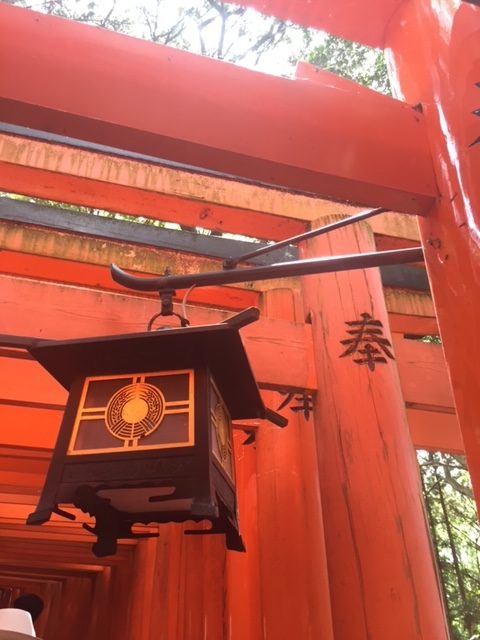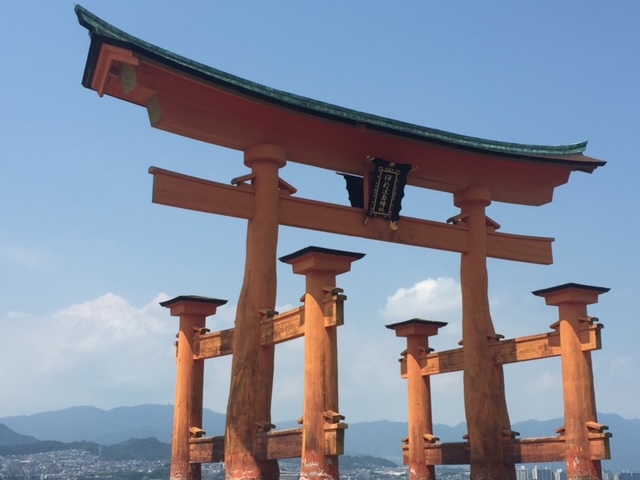The great achievement of the Rising Sun

I planned my travel to Japan in 2011, but then the nuclear reactor in Fukushima exploded. Despite Japanese authorities being certainly reassuring, I preferred to change my holidays’ destination.
In 2016 we could finally make our dream of visiting Japan come true. My husband and I have a great passion for this country and its culture; we studied Japanese for a couple of years, and we try to read it and listen to it whenever it is possible.
We knew that the country was safe but not easy, as a few Japanese speak English and all the public signs are in Japanese. Besides, you cannot find any kind of international dish. So we had been told. But whatever we knew, the first impression was of a nice country, welcoming people, no problems with language. Japanese people are really nice and helpful. The common narrative tells you that they do not reply to questions, but it is definitely false. They are open to strangers and they like to chat with western tourists. Of course, you cannot enter Japan with an elephant’s grace. You have to adapt to its rules, its traditions, and its kitchen. This is certainly valid when you visit every foreign country, but it is especially true in Asia.
We love the Japanese kitchen, which has a wide choice for me too (I am vegetarian) and it is so easy to order food: every restaurant shows you detailed pictures, or even small miniatures of their dishes, so you only have to point at your choice. Anyway, if you want a pause from the local kitchen, you can find all the international restaurants you want.
In the main cities, many people speak English, all the signs are written both with ideograms and Romaji, which is the western alphabet, and that makes it not difficult at all to move with the local transport.
So, much of the information we had were wrong. On the contrary, nobody warned me about the weather. In August it is hot, really very hot and humid. When we entered the gardens of the Ginkakuji, I thought I was going to faint. For the first (and last) time in my life, I experienced the feeling of my eyelid sweating.
But neither the weather nor the people had been the real surprise.
Japan has deep roots in its millennial tradition. You perceive it in every step. There are places where you feel thrown back in the Middle Ages and you might be sure that a samurai is waiting round every corner. All the imperial palaces, and whatever is related to the Emperors’ history are preserved so perfectly that it is almost unbelievable they are ancient buildings. The Golden Pavillon is a sort of mirage: the main building is laying on the surface of a lake, where it mirrors like an Asian Narcissus, surrounded by the most harmonious and peaceful garden I have ever seen. A walk under the ten thousand torii at the Fushimi Inari temple is a passage into the essence of Japan. (A torii is a big red wooden portal that is behind a sacred area)

Japanese people are very proud of their history and very respectful of their traditions and religion. They follow the rituals in the temples they visit, they speak in a very low voice in castles, and they shoot a lot of pictures. And that’s the most impressive image of Japan.
They love technology and hyper-modern devices. Everyone knows they are one of the top IT producers in the world, and they have been one of the most propulsive countries in every field: software, automotive, phone networks… But you have to be in Japan to see how this marriage between tradition and innovation works. They are not two separate souls of the same country. Japanese people can mix them both, in their everyday life.
During our trip, we had the chance to lunch in a restaurant where a maiko was performing a traditional dance. A maiko is a young student who will be a geisha. She is dressed in a very elegant kimono, and her hair and makeup are a little bit less complicated than those worn by an experienced geisha. The maiko was 19-year old, and she was lovely. She looked like a doll, and she performed and acted as a consummate artist. She explained that she went from a very traditional family, and her father was a producer of kimono, so she had decided to attend the geisha’s school instead of the high school. While she was speaking, taking care that almost no one was aware, she took out a smartphone from her obi (the classical waist) and fastly digited something. So, I was looking at the incarnation of tradition, a human icon… who was chatting with a satellite handphone.
Another similar experience was in the Miyajima island. It is a small island, located in front of Hiroshima.
Miyajima hasn’t been inhabited until WWII. There was only a temple and the monks who lived in it. After the war, some people looked for a safe shelter on the island, but there are still a few inhabitants, who run traditional hotels, named riyokan and traditional boutiques where fans and kimono are sold to tourists. The experience in a riyokan is a full immersion in the pure Japanese style: traditional kitchen, tatami to sleep on, a yukata (the light robe), and the onsen where you can take a thermal bath. While we were enjoying the incredible atmosphere of the place, all built with bamboo, and rice paper, the staff informed us about the wifi password, and they suggested switching on the aircon!
That’s Japan: a place where history and future live in an eternal present, where women pay a daily tribute to the iconic beauty of legendary femininity, and where you can expect to find a castle near a glass building. Two souls, one spirit.
Be the first to comment